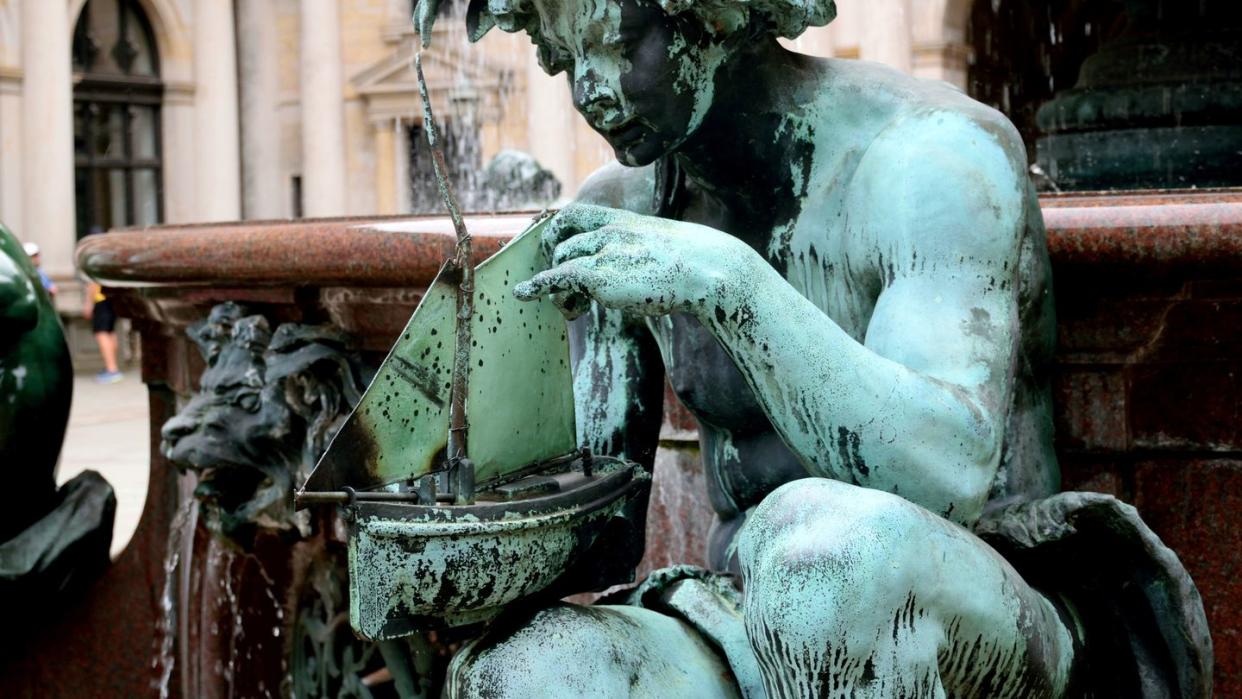After 2,100 Years, Archaeologists Found the Missing Head of an Ancient Greek Statue

An excavation within Laodicea uncovered a 2,100-year-old statue head of the goddess Hygieia.
Revered as the goddess of health and cleanliness, statues of Hygieia were often located at key healing centers and temples.
Discovering a piece of a Hygieia statue further cements Laodicea’s status as a prominent cultural center in the first century B.C.
The goddess of health, Hygieia, must be thrilled to have her head—in this case, the head of a statue—pulled from the dusty ruins of an ancient amphitheater after 2,100 years.
As an archeological team helped with the restoration of the amphitheater in Laodicea, a project that started in 2003, Pamukkale University researcher Celal Simsek says unearthing the ancient statue head of Hygieia was an incredible find. Writing on X, Simsek calls the discovery “the meeting of the Sun and Hygieia with us in Laodicea after 2,100 years.”
Hygieia played prominently in both ancient Greek and Roman mythology as the daughter of Asclepius, the god of medicine. Hygieia, where we get the word hygiene, was known as the goddess of health and cleanliness and statues of her cropped up in healing centers and alongside temples dedicated to Asclepius.
The work in Laodicea had previously unearthed a statue of Aslepius, so discovering the head of Hygieia added another level of excitement. “Both statues were made in the late Hellenistic-early Augusts Period in the classical style,” Simsek says, according to Hurriyet Daily News. “The statues of the god and goddess of health reveal the presence of the Herophileion medical school in the ancient city of Laodicea and the ancient writer Strabo, one of the important doctors trained there. All statues have very fine workmanship and are of high artistic quality.”
Originally known as “Laodicea on the edge of the Lycus,” the ancient Greek city, now in southwestern Turkey outside of modern-day Denizli, rose to prominence likely after its founding by Antiochus II around 261 B.C. Tucked against the south side of the Lycus River, the city’s success was in part thanks to its location near the river and along a major overland trade route. It didn’t stay in Greek hands long and was soon conquered by the Romans. Laodicea is also well known as one of the seven churches discussed in Revelation in the Bible and shares proximity to other prominent Biblical cities, such as sitting roughly 100 miles east of Ephesus.
In its heyday, the city was believed to house the largest stadium in Asia Minor, two theaters, four baths, five fountains, and a bounty of temples, churches, and decorative streetscapes. Archaeologists have said that the splendor of the city was largely in the Roman style, heavy with colonnades and extravagance.
But none of it lasted, likely thanks to earthquakes. One struck the city in 60 A.D., while Nero ruled, and while the city largely rebuilt, additional earthquakes in 494 A.D. and after 602 A.D. made living in the area difficult, especially as the political landscape shifted with the ground. It is later believed Laodicea was destroyed fully during the invasion of the Turks and Mongols.
You Might Also Like


